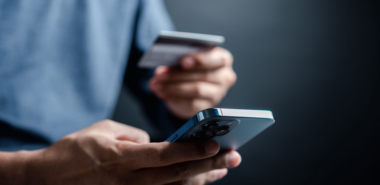When I was a child, my mother used to give me a choice for breakfast. “How would you like your eggs – hard-boiled, soft-boiled, fried, or scrambled?”
If she had just served up the eggs according to her choice – even if it was my favorite way – I might have not eaten them at all. But the fact that she gave me choice made me feel empowered and in control. I was happy to eat the eggs the way I chose to eat them.
I don’t know about you, but I see authentication in much the same way. Especially when it comes to biometric authentication.
Authentication – having to prove that you are who you say you are – is not something that consumers look forward to doing. They do it because they know it’s good for them – it protects their money. Some forms of authentication can be more fun than others – for example, taking a selfie. Or perhaps they’re more convenient – like swiping your finger. Other forms you might not like as much, maybe because you feel that they intrude in your private space.
As Guillaume Pierquin, Marketing Manager, Mobile Solutions for Digital Banking at Gemalto, put it: “Some people are comfortable with facial [biometrics], some are not. Clearly there are some people who are reluctant, others are enthusiastic. It also depends on the demographics – young people are keener to use facial recognition compared to older people who are more conservative.”
It’s all very subjective, and differs from person to person. Just like our tastes in food.
The solution? Do as my mother used to do: give them the choice. Yes, you have to authenticate – but you still have power. You can still choose how you do it.
In the words of CEO Olivia Ruello, “Giving customers the choice makes them feel like they’re in control and calling the shots.” And that’s a good thing – for banks, who get more engaged customers; for online retailers, who reduce cart abandonment; and for consumers, who are happier.
Happier consumers, after all, is the main aim of biometric authentication – at least today. While you might be able to replace your fingerprint since you have 10 fingers, replacing your face, your voice, or your iris if the corresponding biometric template gets stolen is quite a challenge. So a PIN or a password will always remain as a fallback authentication factor if, for whatever reason, something goes wrong.
This means that biometric authentication does not replace passwords or PINs – it simply complements them, offering an easier, more convenient alternative. Contrary to popular opinion, its main purpose is not to increase security; it is simply to increase convenience for end users. That’s why choice is crucial – because convenience means different things for different people.
Choice is at the heart of Gemalto’s offer in biometric authentication. Last year, a Juniper Research report identified Gemalto as a “Disruptor” in biometrics – meaning that we scored high on both innovation (ability to develop new, distinct products or services) and agility (ability to bring products or services to market quickly). Our Gemalto Mobile Protector offer already offers the choice between facial and fingerprint authentication – and more biometric options are set to come.
Our hope is that, one day, biometric authentication will be as natural as choosing how to eat your eggs for breakfast.
Are you using biometrics for online authentication – and which kind? Share your thoughts in the comments below!


